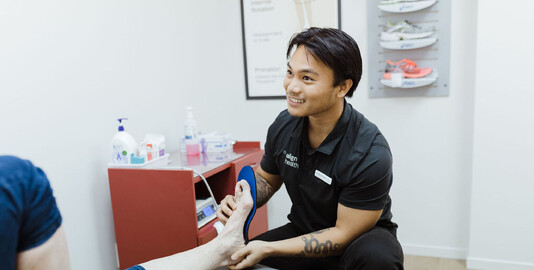Podiatry
Our podiatry team are specialised to treat conditions and injuries affecting your feet and lower legs.
Have a problematic corn, callus or ingrown toenail? Suffered a recent foot or ankle injury? Or do you have a long-term condition like foot pain, arthritis or diabetes affecting your health? Our Podiatry team are specially trained in the treatment of conditions affecting your feet and lower legs.
Conditions we commonly treat:
- Toenail problems – in-grown nails, thick nails, fungal nail, infected nails
- Foot, heel and leg pain – aching feet, heel pain, Achilles pain, shin pain, knee pain, Morton’s Neuroma
- Skin problems – corns, calluses, thick and cracked heels, verrucae
- Foot problems – flat feet, high arched feet, bunions, hammertoes
- Children’s foot problems and growing pains – Children’s heel pain / Sever’s Disease
- Diabetic foot care
How can podiatry help me?
- ACC foot, ankle, knee, hip, and back injuries
- Biomechanical assessment
- Cosmetic podiatry / medical pedicure
- Custom made orthotics / insoles and footwear modifications
- Aged foot care
- Diabetic foot care
- Nail surgery
- Footwear advice
- Exercise prescription
- Strapping and brace fitting


